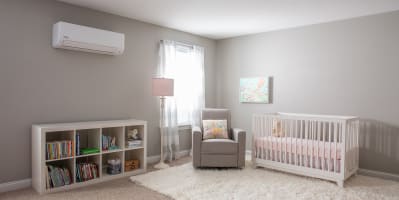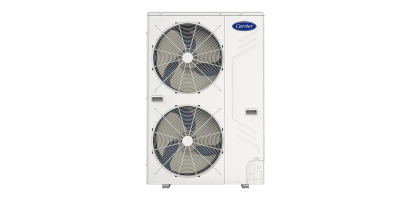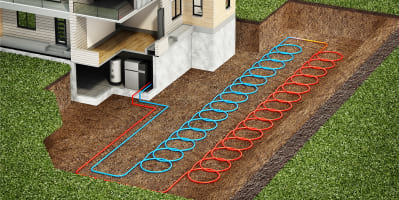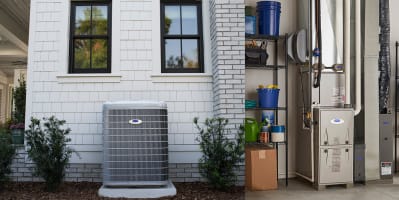
Sustainability
At Carrier, we are committed to building a sustainable future for all. We strongly believe that protecting our planet is the right thing to do. We understand the impacts our industry has on the environment and are committed to being stewards for the long haul. We go beyond minimum regulatory standards with our products and our efforts throughout the industry to ensure we are taking care of our planet. Read more about Carrier Corporation’s 2030 ESG goals.

What is exactly is decarbonization and how does it contribute to the environment?
Decarbonization is the effort to reduce carbon emissions through a number of methods. Electrification, utilizing lower GWP refrigerants, increasing energy efficiency standards, reducing reliance on fossil fuels and natural gas, and increasing reliance on “clean” sources of energy are all parts of the equation. Here is a closer look how each of these can play a role:
As the name implies, electrification refers to the process of replacing fossil fuel or natural gas burning equipment with similar electric equipment, appliances, or systems such as Carrier heat pumps or ductless units. , Heat pumps can reduce carbon dioxide emissions by 38-53% over a 15-year period and reduce 20-year global warming potential by 53-67% when compared to a gas furnace.1 Additionally, high-efficiency electric units can save homeowners on utility costs.
Efficiency
This involves installing and using higher efficiency electric appliances, vehicles, HVAC equipment, and more. The Inflation Reduction Act of 2022 provides tax credits as an incentive for installation of higher efficiency HVAC systems. Many local utility companies are assisting this cause with rebates for purchasing ENERGY STAR® certified appliances such as the ones Carrier offers.
Refrigerants
Current HVAC systems using refrigerant with higher GWP ratings can contribute to carbon emissions through instances of refrigerant escapes into the atmosphere. Puron Advance™ is Carrier’s refrigerant of choice and the best solution to minimize environmental impact and energy use as a low-to-no GWP refrigerant.

Residential and commercial buildings are collectively one of the leading contributors to energy usage and emissions (when combining direct emissions and indirect, electricity-related emissions).2 Breaking it down further, HVAC systems represent more than half of the energy use in residential applications.3 By offering higher-efficiency, all-electric comfort solutions, HVAC manufacturers like Carrier can play a significant role in decarbonization.

Financing a Greener Tomorrow
We know going greener with your HVAC can be expensive. At Carrier, we’re committed to providing total comfort by offering financing options with convenient monthly payments.4 Learn how Carrier’s EcoHome™ Program can help you maximize Inflation Reduction Act of 2022 savings while improving sustainability. In addition, local utility rebates may be available on some products to help reduce the overall expense of installing a new heating and cooling system.
To help accelerate decarbonization, Carrier offers a comprehensive collection of electric product offerings, including our award-winning heat pumps, ductless systems, VRF systems, and geothermal comfort systems. Our all-electric solutions can replace natural gas or propane in virtually any installation or climate. Low GWP refrigerants are part of the equation as well.


1 Study completed by UC Davis Western Cooling Efficiency Center
2 https://www.nrel.gov/docs/fy17osti/68214.pdf
3 https://www.eia.gov/energyexplained/use-of-energy/homes.php
4 Subject to credit approval. Ask for details
5 https://www.energystar.gov/campaign/heating_cooling/duct_sealing/benefits
6 https://www.energy.gov/eere/articles/making-difference-geothermal-heat-pumps
7 Savings calculated using Carrier LoopLink® software. Comparison based on simulation in Dallas, TX. Carrier 6-ton unit vs. standing pilot propane furnace, standard air conditioner and local fuel rates. Actual savings will vary based on configuration, weather, and local energy costs.






